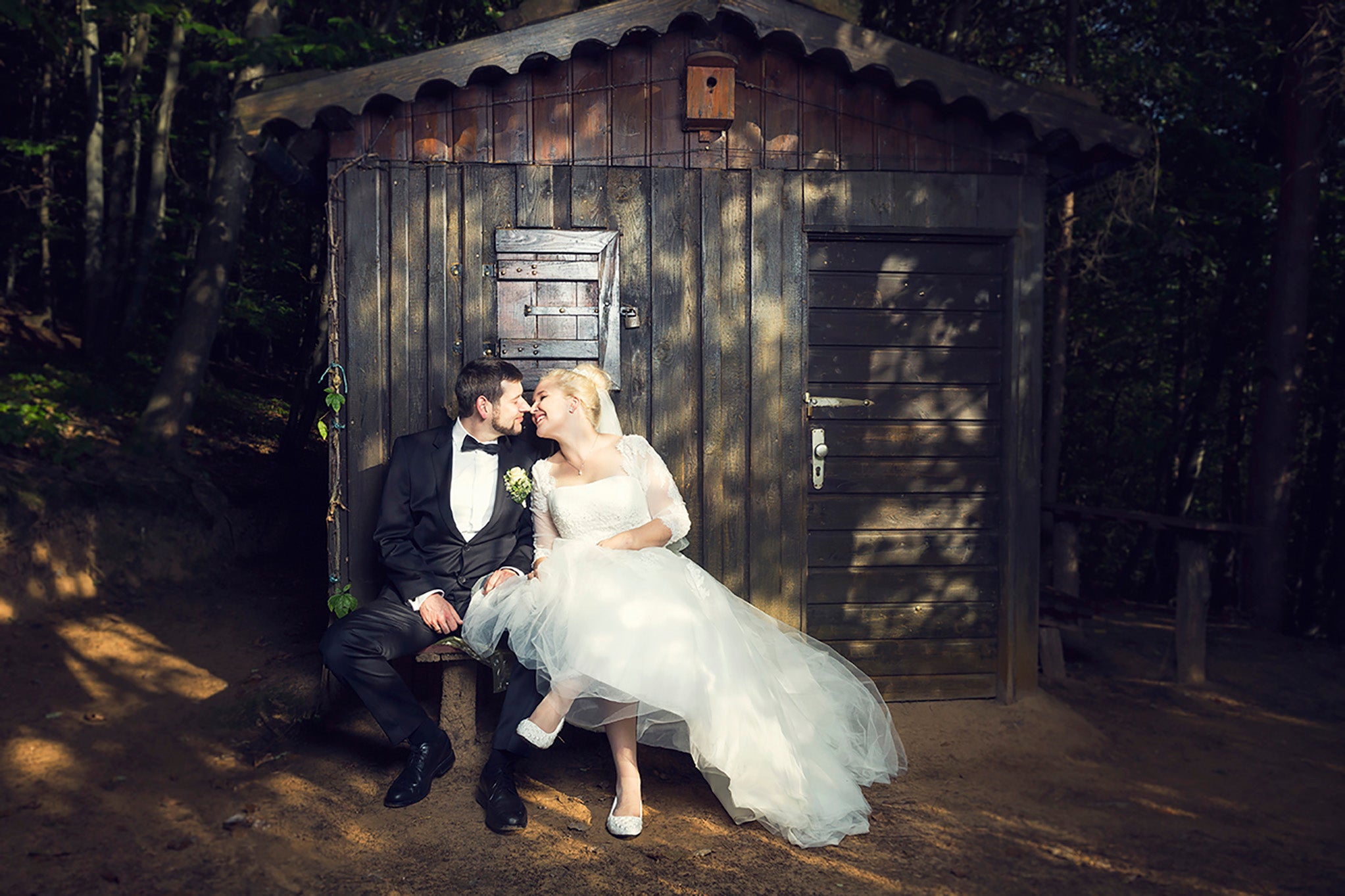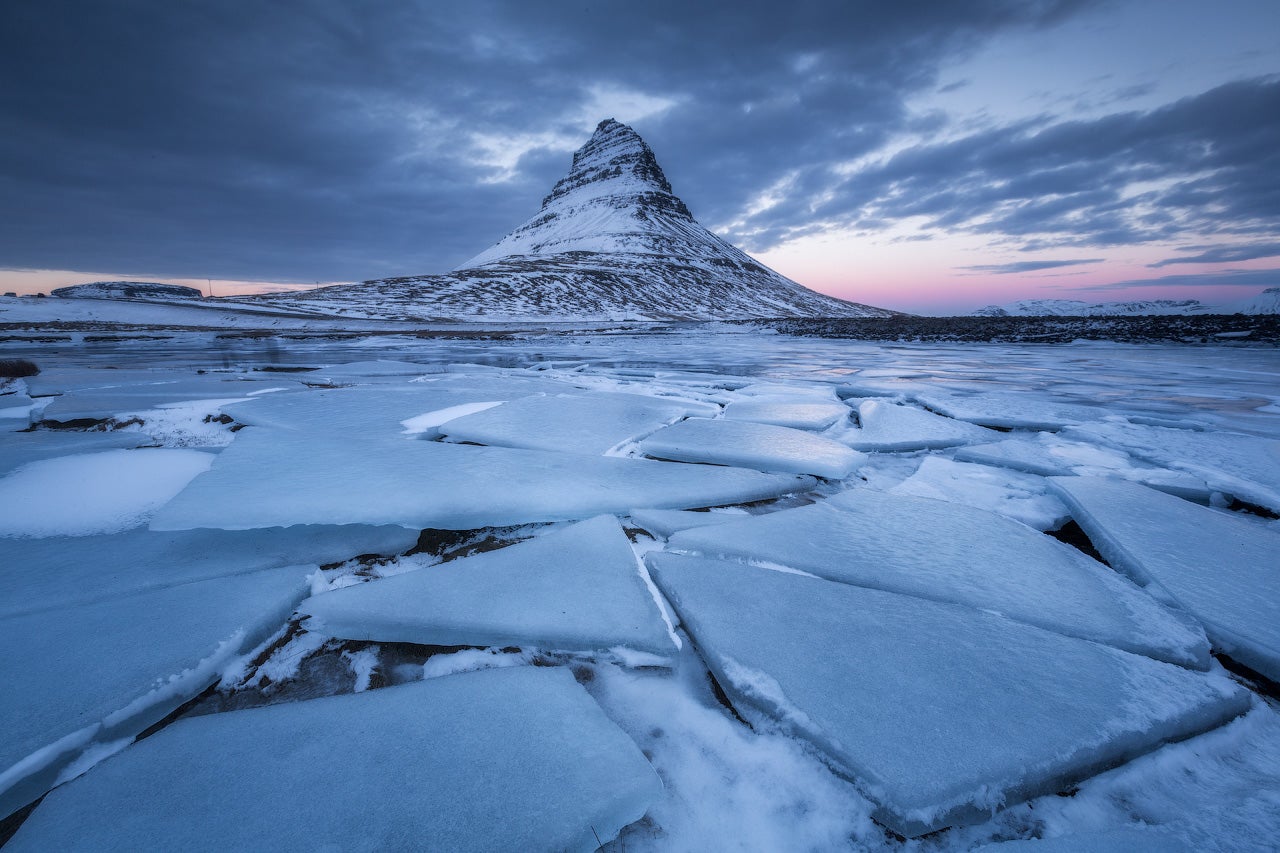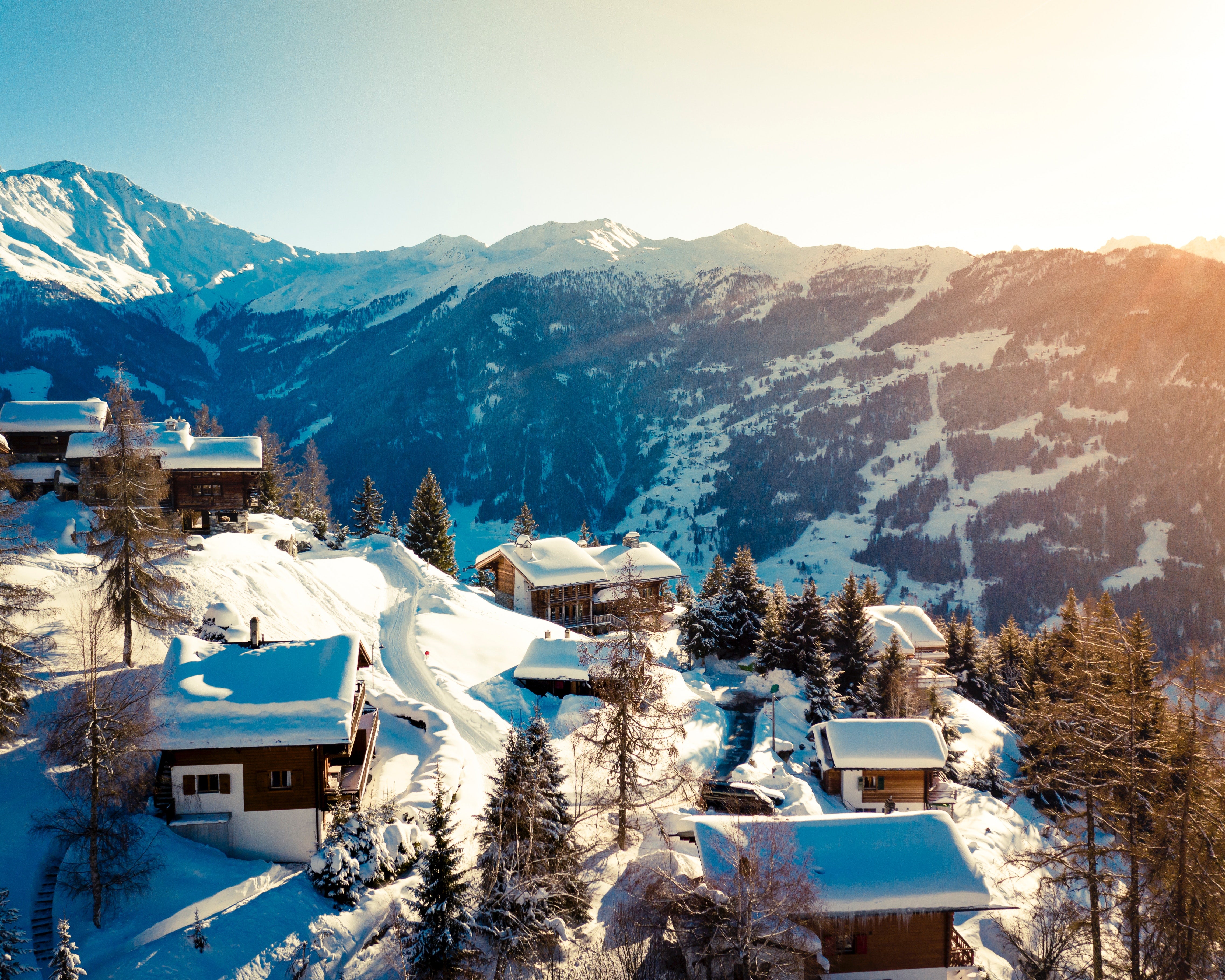
There is no doubt that Iceland is full of stunning scenery but when it comes to waterfalls, it has some of the most majestic cascades on the planet. On any given photography workshop with Iceland Photo Tours, you are bound to see quite a few and there is nothing more exhilarating than finding yourself dwarfed by these beauties.
- Check out these articles on Photography Techniques
- See these 11 Tips to Help You Capture Stunning Landscape Photographs
- Discover The Best Waterfalls for Photography in Iceland
From clambering your way up behind the curtain of water at Seljalandsfoss through to admiring the almighty power of Dettifoss, you are sure to get your waterfall fix when you visit this breathtaking destination. So before you arrive, prepare yourself to photograph the waterfalls of Iceland in all their glory by following our tips, which will allow you to take full advantage of your photography gear during your trip.
Recommended Camera Gear for Waterfall Photography
 You need the right equipment to take great pictures of waterfalls in Iceland. Photo by: 'Iurie Belegurschi'.
You need the right equipment to take great pictures of waterfalls in Iceland. Photo by: 'Iurie Belegurschi'.
Taking photos of waterfalls can be challenging, particularly if you do not bring the right equipment with you. There are also some things that you won’t be able to obtain once you are in Iceland, so it is best to ensure that you gather all the necessary bits and bobs in advance. Take in our recommended camera gear list below and you can be certain that you won’t be left high and dry.
Digital Camera
 A good digital camera will help you to capture great pictures of waterfalls in Iceland. Photo by: 'Iurie Belegurschi'.
A good digital camera will help you to capture great pictures of waterfalls in Iceland. Photo by: 'Iurie Belegurschi'.
We recommend bringing along a digital camera, preferably a Digital SLR or a Mirrorless camera with a full-frame sensor, as these cameras will allow you to take full control of all the settings.
Cameras that are suitable for the job include the Canon 5D Mark III, Canon 6D, Nikon D810, Nikon D740, and the Sony A7R series.
There are numerous other brand systems in the market today that we have not mentioned, such as Fuji, Olympus and Pentax. If your system is not in our list, then as long as it fits the basic requirements, you will still be able to take photographs of waterfalls and to learn how to photograph waterfalls just as well as you would using the aforementioned brands above.
- See also: Camera & Gear Reviews
Lenses
 Wide angle and telephoto lenses are the best for photographing waterfalls in Iceland. Photo by: 'Iurie Belegurschi'.
Wide angle and telephoto lenses are the best for photographing waterfalls in Iceland. Photo by: 'Iurie Belegurschi'.
There are two main types of lenses which you will use when photographing waterfalls in Iceland.
The first is a wide angle zoom lens, which will allow you to capture the entire beauty of a waterfall. Our photo guides have tested and recommend using the Canon EF 16-35mm f/2.8L Mark II, Nikkor 17-35mm f/2.8D ED-IF, and the Nikkor 14-24 f/2.8G ED. Don’t worry if you have a different brand, as it will likely suffice.
The second type of lens that is useful for waterfall photography is a telephoto, which will allow you to zoom in and capture abstract details within the plunging water itself. Some telephoto lenses that we recommend are the Canon 70-200mm f/2.8L IS Mark II, Canon 70-200mm f/4.0L IS, Nikkor 70-200 f/2.8G ED VR II, and the Nikkor 70-200 f/4.0G ED VR.
Where possible, choose a lens that is not too heavy to carry, as we will likely be undertaking some short hikes on our tours. The last thing you’ll want is to be weighed down by your gear.
Tripod
 You'll need a good tripod to achieve longer exposures. Photo by: 'Iurie Belegurschi'.
You'll need a good tripod to achieve longer exposures. Photo by: 'Iurie Belegurschi'.
To make the water look dreamy and silky smooth, you will need to bring along a sturdy tripod, as it is almost impossible to use a camera handheld to achieve this effect without introducing some sort of shake.
It can also be very windy in Iceland, so it is important that your tripod is stable and can deal with the rugged outdoor environment. There are times when you will want to place your tripod into the water, so make sure that you choose something that is able to weather the conditions whilst being lightweight and suitable for travel. A flimsy, cheap tripod will simply prevent you from being able to shoot most of the time and the last thing you’ll want is your expensive camera crashing into the depths of a waterfall.
Manfrotto, Really Right Stuff (RRS) and Gitzo are all tripod brands that we have tested and which we have been using for years. These brands are also available in most stores.
When picking a tripod, make sure that you have the right model for your camera system, based on its height and weight. We suggest heading into a store to try your tripod before you buy it, so you can ensure that it is the right fit for you.
Tips & Tricks for Photographing Waterfalls in Iceland
Aside from using the lowest possible ISO to reduce noise, one of the most important factors in waterfall photography is shutter speed.
When photographing moving water, different shutter speeds can produce different results.
Long Exposure Photography for Waterfalls
Consider this image of Skógafoss, one of Iceland’s most prominent waterfalls.
 A long exposure of Skogafoss in Iceland. Photo by: 'Iurie Belegurschi'.
A long exposure of Skogafoss in Iceland. Photo by: 'Iurie Belegurschi'.
The water is milky-white, fluid and silken. As a consequence, the overall image feels calm and relaxing. The key to creating this type of effect, whereby the water appears both ethereal and smooth, is to select an appropriately slow shutter speed.
For most waterfalls, a shutter speed of around 1 to 3 seconds will suffice. If you use a longer shutter speed, then the white areas within the water may appear too blurred, completely dulling the movement of the water.
Faster Shutter Speed for Waterfall Photography
 A faster exposure of Skogafoss waterfall. Photo by: 'Iurie Belegurschi'.
A faster exposure of Skogafoss waterfall. Photo by: 'Iurie Belegurschi'.
You will notice that in the second image of Skógafoss, the water has more texture and seems as though it is falling heavily through the air. This technique can make a scene look more dramatic and is best used for powerful waterfalls with a lot of volume.
To freeze the water in motion like this, use a fast shutter speed of over 1/1000 of a second. Choose a high enough shutter speed that will allow you to achieve the effect whilst maintaining an appropriate aperture for good depth of field and an ISO low enough to avoid noise.
Experimenting with shutter speeds means that you can control the message that you convey with your waterfall shot and even change the overall mood. However, you may find it difficult to slow down your shutter speed enough, particularly when shooting in bright daylight.
One trick to getting around this hurdle is by using a smaller aperture, which will decrease the amount of light that passes through your lens. Try changing the aperture to something like f/11 or f/16 to help you achieve that dreamy look.
Using Filters for Waterfall Photography
 Filters can help you to achieve creative effects with waterfalls. Photo by: 'Iurie Belegurschi'.
Filters can help you to achieve creative effects with waterfalls. Photo by: 'Iurie Belegurschi'.
If you have already adjusted your aperture and you are still having difficulty achieving a slower shutter speed, then it means there is too much light entering your lens. We recommend using a neutral density (ND) filter to further reduce the incoming light, thereby allowing for a longer exposure.
There are many different types of ND filters out there, differing by the amount of light they let through. For the purpose of waterfall photography in Iceland, we suggest that you bring along an ND 0.9 filter, which will effectively block 3 stops of light. This is useful for photographing waterfalls during the winter, when the lighting is soft.
 Use ND filters during summer to block out stops of light for longer exposures. Photo by: 'Iurie Belegurschi'.
Use ND filters during summer to block out stops of light for longer exposures. Photo by: 'Iurie Belegurschi'.
If you’ll be in Iceland during the summer, then you might want to consider bringing along an ND 1.8 filter, which will block 6 stops of light. This is particularly useful for photographing waterfalls in the golden daylight of the Midnight Sun.
Another thing that should be in your Iceland waterfall photography kit is a circular polarising filter. By using a polarising filter, you will be able to eliminate any unsightly reflections on the water or rocks, saturate the colours around the waterfall and further reduce the amount of light entering your lens.
With the polariser attached, look through your viewfinder or LCD and rotate the filter. You’ll notice the reflections disappearing and the colours increasing in saturation. This is an effect that can’t necessarily be replicated in post-processing, so it is important that you achieve the best that you can in-field.
Keeping the Lens Dry
 Make sure to keep your lens dry while photographing waterfalls. Photo by: 'Iurie Belegurschi'.
Make sure to keep your lens dry while photographing waterfalls. Photo by: 'Iurie Belegurschi'.
Powerful waterfalls such as Goðafoss and Dettifoss can release plenty of water into the air, which might cause droplets to land on the front of your lens and potentially result in complications with your equipment or even permanent damage. This is of particular concern if you are using a camera which is not weather-sealed.
To keep the front of your lens clean and your images crisp, make sure to have lens cleaning wipes on hand, a good microfibre cloth and a rocket blower to blow the drops away. You might also want to invest in a rain jacket for your camera or even take a plastic bag to protect it from rain and spray.
How to Compose a Waterfall Shot in Iceland
 The beautiful Kirkjufellsfoss. Photo by: 'Iurie Belegurschi'.
The beautiful Kirkjufellsfoss. Photo by: 'Iurie Belegurschi'.
The waterfalls in Iceland take many different shapes, forms and sizes. From the glorious multi-tiered Dynjandi waterfall in the Westfjords to the attractive Kirkjufellsfoss at the base of the iconic mountain Kirkjufell, you will find an amazing array of falls that offer many opportunities for making the most of your creativity.
When you first arrive at a waterfall, rather than setting up your tripod straight away and pointing directly at the waterfall itself, explore the area for various compositions.
Try walking around the waterfall while looking through your viewfinder. This will allow you to see how the waterfall looks at different angles. It can be more aesthetically pleasing to shoot at an angle instead of directly in front of the waterfall itself. You can even include foreground elements such as rocks, flowers or snow crystals to add interest to the scene.
 Zoom in for a tighter composition at Hraunfossar. Photo by: 'Iurie Belegurschi'.
Zoom in for a tighter composition at Hraunfossar. Photo by: 'Iurie Belegurschi'.
Zooming in with a telephoto lens will allow you to capture a smaller area, such as textures within the water, creating an abstract scene focused on motion and colour.
Play around with shooting in both landscape and portrait layouts as well as different aspect ratios. If the sky is not interesting, then try cutting it out completely and focusing on other elements instead.
Last but not least, when composing your shot, don’t be afraid to get your feet wet. Some of the best opportunities for waterfall shots in Iceland may be found when standing directly in the water at the base of a waterfall itself. Do not enter the water if it is too rough or deep and keep in mind that the rocks underneath the water may often be very slippery. The last thing you’ll want is for you and your camera gear to take a tumble into the water, so be patient when setting up your tripod and ensure that you have adequate footing before you take any photos.
 Haifoss waterfall in the Icelandic Highlands. Photo by: 'Iurie Belegurschi'.
Haifoss waterfall in the Icelandic Highlands. Photo by: 'Iurie Belegurschi'.
Although photographing waterfalls may be tricky to master, the ample opportunities to capture these spectacles of nature in Iceland will have you honing your skills and getting the hang of your equipment sooner than expected. Taking the perfect shot requires a combination of persistence, experimentation and a good approach, so make the time to prepare yourself with our tips before you arrive and you’ll be ready to take remarkable photos of the waterfalls in Iceland in no time.
About the author: Serena Dzenis is a landscape photographer based in Iceland. You can find more of her work on her website or by following her on Facebook and Instagram.
Capture the beauty of Iceland's most stunning waterfalls, black sand beaches and glacier lagoons on our 5-Day Summer Photo Tour!












